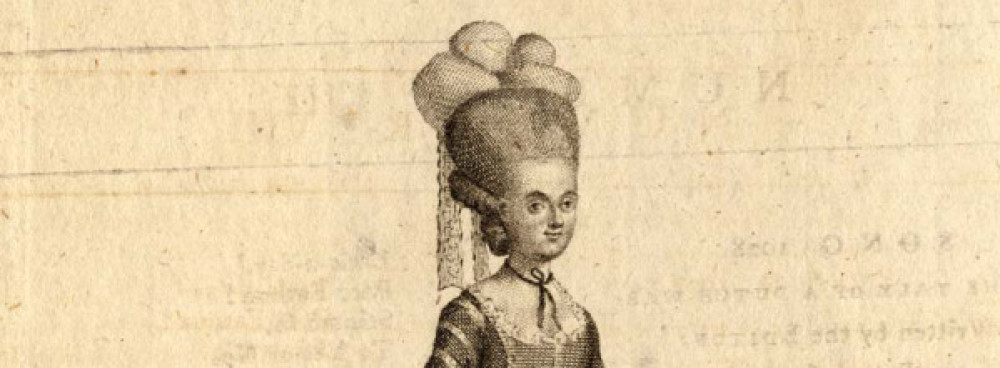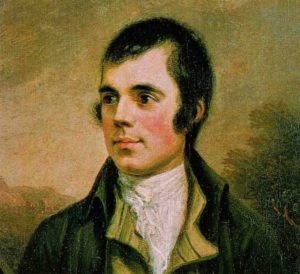(1773 – 1799)
Miss Louisa Fontenelle (later Williamson), according to A Biographical Dictionary, made her first appearance “on any stage” in the role of Moggy in the premiere of The Highland Reel at Covent Garden Theatre in November of 1788. [1]
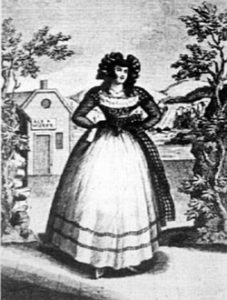
Louisa Fontenelle Williamson as Moggy Public Domain Image
Although her first season was successful, Louisa was criticized for exhibiting “too much liveliness.”[2] She played in Brighton in the summer of 1789 and then Edinburgh in October of that year. She appeared at Haymarket in London in the summers of 1790 to 1793.[3]
Louisa was performing at the Dumfries theatre in Scotland in the Autumn of 1792 when she captured the attention of poet Robert Burns, who wrote a special address for her to deliver on her Benefit Night of November 26, 1792, The piece, entitled ‘The Rights of Woman” identified three “rights” that women expect from men: their protection, their decorum, and their adoration.[4] Along with the piece, Burns sent Louisa a letter:
Robert Burns Public Domain image, Via Wikimedia Commons
In such a bad world as ours, those who add to the scanty sum of our pleasures, are positively our benefactors. To you, Madam, on our humble Dumfries boards, I have been more indebted for entertainment, than ever I was in prouder Theatres. Your charms as a woman would ensure applause to the most indifferent Actress, and your theatrical talents would secure admiration to the plainest figure.[5]
Also in 1792, Burns also wrote an ‘Epigram on Seeing Miss Fontenelle in a Favourite Character:”
Sweet naivete of feature,
Simple, wild, enchanting elf,
Not to thee, but thanks to nature,
Thou art acting but thyself.
Wert thou awkward, stiff, affected,
Spurning nature, torturing art;
Loves and graces all rejected,
Then indeed thou’dst act a part.[6]
Louisa Fontenelle married James Brown Williamson, manager of the Dumfries Theatre, becoming his second wife, and the couple emigrated to America in late 1795.[7] She appeared on 25th of January 1796 in Boston as Little Pickle in The Spoiled Child. John Bernard referred to Louisa’s “animal spirits” and quoted Robert Merry’s exclamation, “She takes my breath away!”[8]
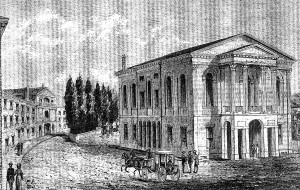
Federal Street Theatre Boston Public Domain Image
Louisa excelled at comedy, “an excellent comic actress in romps and mischievous boys.” Ireland, in Records of the New York Stage reports, “Her American debut was at Boston in 1796 and her final exit from the stage of life, at Charleston SC Oct. 31st 1799. She was little known in New York, but was highly praised by the few who saw her.”[9]
During her all too brief career in the United States, Louisa played under the name of Mrs. Williamson. As Bernard noted, in Retrospections of America, she “Mrs. Williamson, alias Miss Fontenelle, reigned supreme over all transatlantic soubrettes.”[10]
She was a favorite in Boston in 1796-7.[11] In that season, Louisa depicted Beatrice in Boston’s first production of Shakespeare’s Much Ado About Nothing. [12]
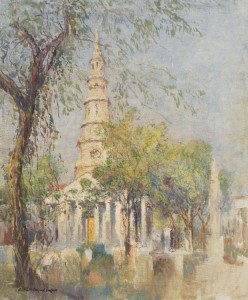
Charleston S.C. Public Domain Image
She and her husband played Hartford in August and then joined Sollee’s company in Charleston. A Biographical Dictionary reports that the Williamsons were back in Boston in fall of 1798 at combined salary of $18.66 per week but left in December of 1798 and went back to Charleston.[13] However, Charleston’s City Gazette and Daily Advertiser of November 6 1797 reported that the Williamsons, along with the Whitlocks, the Clevelands, Mrs. Rowson and other performers arrived on the sloop Maria from New York. Despite the other well-known performers in the company, the article focuses on Mr. and Mrs. Williamson, observing the Mrs. Williamson “has always received the plaudits due to a deserving actress. . .but the people of Charleston will soon have an opportunity of judging for themselves…”[14] In Charleston, Louisa played regularly; roles included, Little Pickle in The Spoiled Child, Moggy in The Highland Reel; Julia Faulkner in The Way to Get Married, Peggy in The Country Girl, Cowslip in The Agreeable Surprise, Jesse Oatland in A Cure for a Heartache, Amanthis in A Child of Nature, and more. She also depicted Shakespearean roles: Rosalind in As You like It; Mistress Ford in The Merry Wives of Windsor, and , in 1797 and in 1799, portrayed Ophelia in Hamlet.
Louisa’s career was cut short in 1799; after illness of three days, she died unexpectedly at Charleston on 29 or 31 October, at age of 26. Another member of the company, Mr. Jones, also died around the same time. Eola Willis, in The Charleston Stage in the XVIII Century reports that, out of respect, the theatre closed for week.[15] Louisa’s obituary appeared in the South Carolina State Gazette and timothy’s Daily Advertiser on November 2, 1799 and stated that her death had occurred on the previous Thursday, October 31st. Her obituary stated, “Her professional talents were universally allowed; her private virtues were known only to a few in this country, but they have left an indelible impression on the minds most acquainted with them.”[16] The City Gazette and Daily Advertiser observed,
The early death of this most accomplished actress, is truly lamented by all who have enjoyed the pleasure of seeing her on the stage where she shone unrivalled; in a word since she has been known in this city, she has been the delight of our Theatre.[17]
Over the next two months, until late December 1799, newspapers in New York, Philadelphia, Boston, Brookfield MA, Portsmouth NH, and Portland, ME included her obituary.
Louisa’s husband, James Williamson, married soon after the “widow of Jones, a Charleston actor.” He died in Charleston on 26 March 1802, and his new wife, the widow Jones, survived only till November of that year.[18]
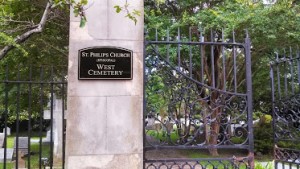
St. Philip’s Cemetery, Charleston S.C. Author’s photograph
According to the burial records of St. Philip’s Episcopal Church in Charleston, Louisa was buried in the cemetery there on November 1, 1799; however the exact location of her grave is unknown.
NOTES
[1] Philip H. Highfiill, Kalman A. Burnim, Edward A. Langhans. A Biographical Dictionary of Actors, Actresses, Musicians, Dancers, Managers, and Other Personnel in London, 1660-1800. Carbondale IL: Southern Illinois Press, 1978: 320.
[2] Ibid, 322.
[3] Highfill et al, 322.
[4] Burns Country, robertburns.org
[5] Ibid.
[6] Burns Country, robertburns.org
[7]Highfill, et al., 320.
[8] John Bernard, Retrospections of America, New York: Harper and Brothers, 1886: 256.
[9] Joseph Ireland, Records of the New York Stage. New York: Benjamin Blom, 1966; 150-151.
[10] Bernard, Retrospections of America, 265..
[11] Highfill, et al., 323.
[12] Charles Wingate, Shakespeare’s Heroines of the Stage. New York: Thomas V. Crowell and Co., 1895: 51-52.
[13] Highfill, 323.
[14] Charleston Daily Gazette and Daily Advertiser, 6 November 1797.
[15] Eola Willis.The Charleston Stage in the XVIII Century. New York: Benjamin Blom, 1968: 440.
[16] South-Carolina State Gazette, and Timothy’s Daily Advertiser, 2 November, 1799.
[17] The City Gazette and Daily Advertiser, 2 November 1799.
[18] Highfill et al., 323.
